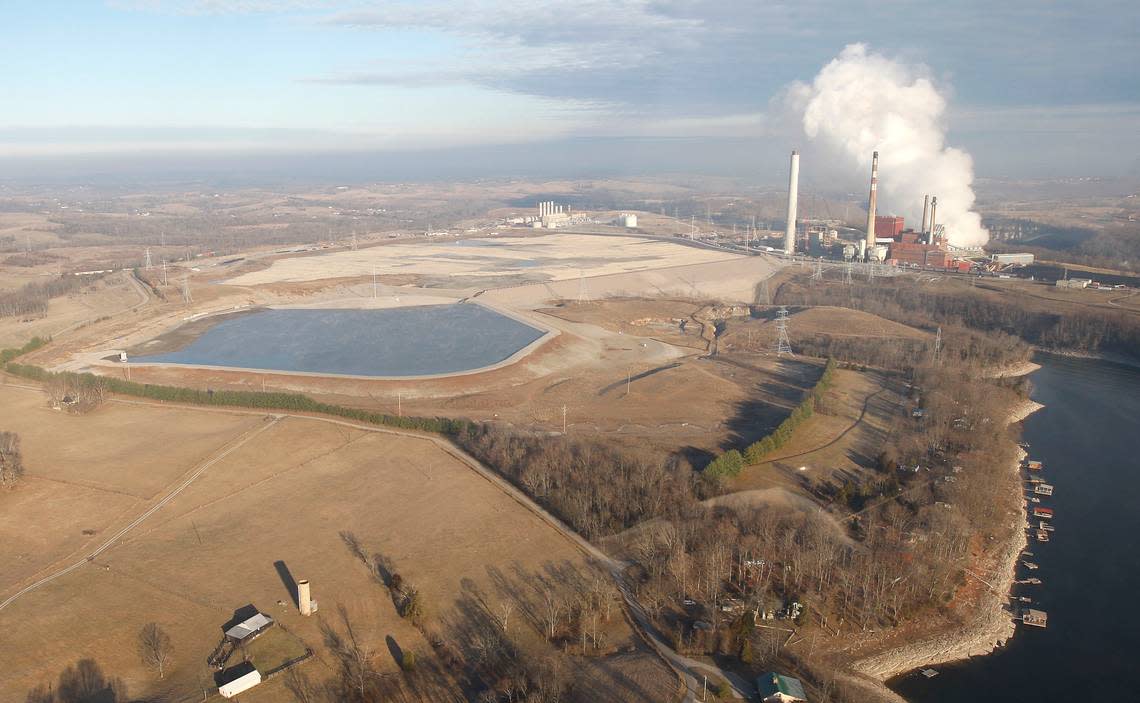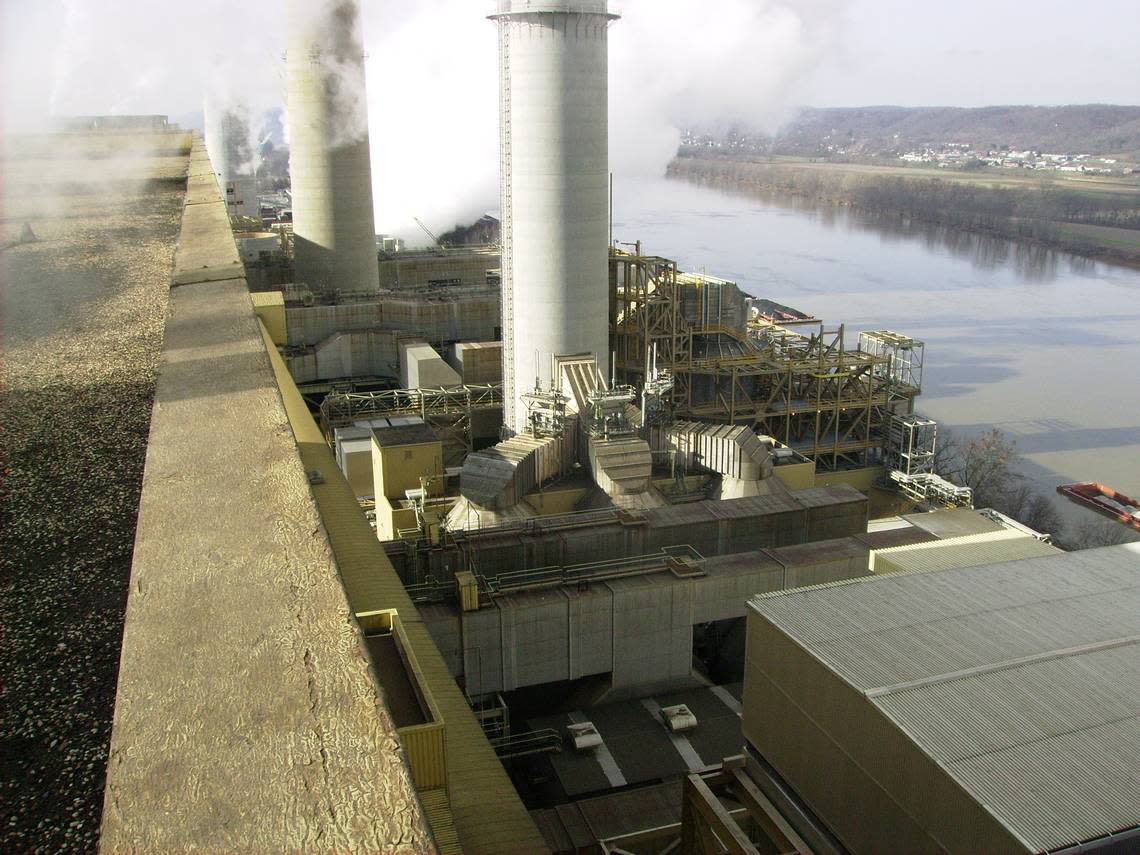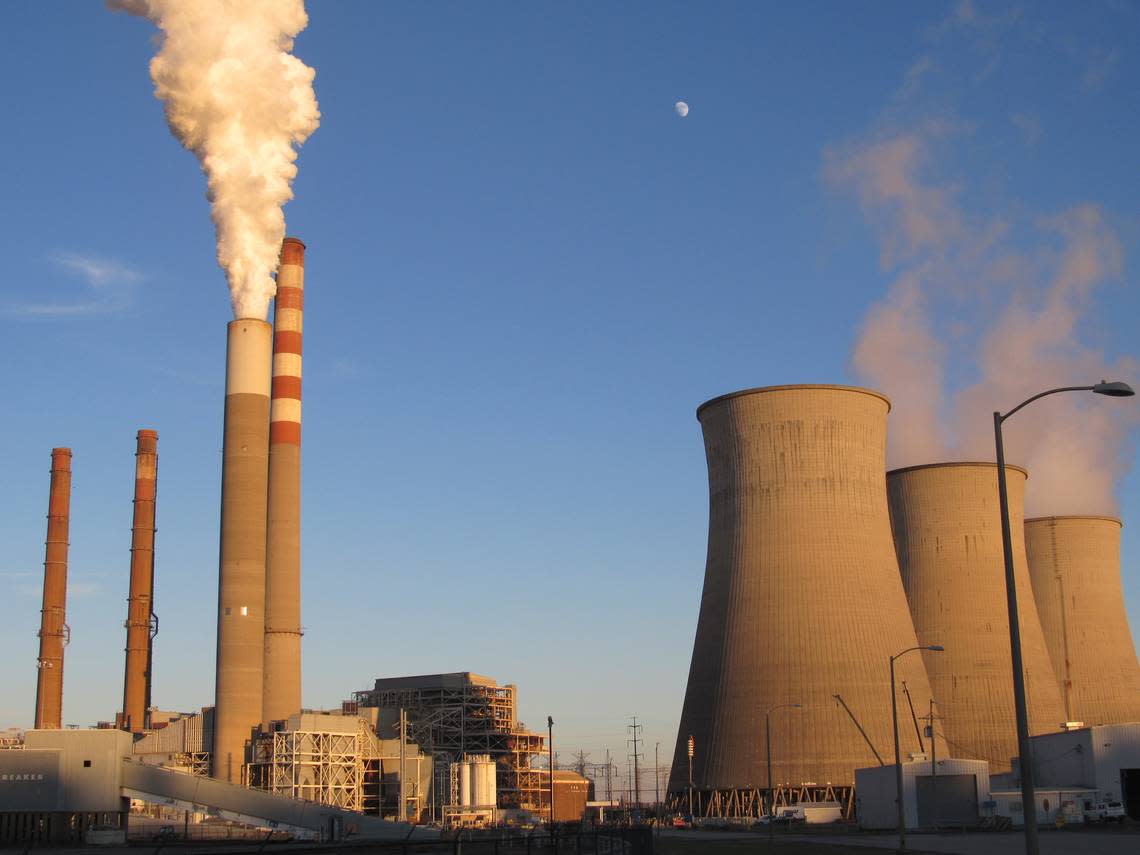Pollution from coal waste still contaminating water in Kentucky and U.S., groups say
Years after the federal government mandated cleanup, pollutants such as arsenic and mercury continue to leach into groundwater from waste storage sites at current and former coal-burning power plants in Kentucky and other states, two environmental groups have charged.
Kentucky has 15 sites where pollutants from coal-ash ponds or landfills are contaminating groundwater, according to the report released Thursday by the Environmental Integrity Project (EIP) and Earthjustice.
That is the third most in the country, behind Indiana and Illinois with 16 each, the report said.
The highest level of contamination observed at a Kentucky site was at the Ghent Generating Station, a coal-fired power plant near the Ohio River in Carroll County, according to the report.
Lithium, which can cause kidney, thyroid and neurological damage, was found in groundwater monitoring stations there at 145 times the safe level, the report said.
The monitoring wells there showed lead and arsenic at elevated levels as well, according to the report.
“Coal plant owners are ignoring the law and avoiding cleanup because they don’t want to pay for it,” Lisa Evans, senior attorney at Earthjustice, said in a news release. “Coal ash waste is causing widespread water contamination that threatens drinking water supplies and the environment.”
None of the utilities that control contaminated sites in Kentucky have released a plan to treat groundwater as part of the process of cleaning up the sites, the environmental groups said.
The U.S. Environmental Protection Agency adopted the rules at issue in 2015 after large coal-ash spills, including in Tennessee, and reports of water contamination from leaks at ash ponds and landfills.

Coal ash is the waste left behind from burning coal to generate electricity. It contains heavy metals and other pollutants that can cause cancer and health problems at high enough levels.
The 2015 law aimed to have utilities stop disposal of coal ash into leaking ponds; close ash ponds and landfills safely; monitor for groundwater contamination; clean up sites; and restore the quality of groundwater at the sites, according to the report from EIP and Earthjustice.
The groups used information filed by utilities to analyze compliance seven years on. The report issued Thursday follows one from 2019.
Most utilities have stopped sending coal ash to unlined ponds, which is a success of the law, the report said.
However, the groups said compliance was poor otherwise, with continued unsafe levels of groundwater contamination at 91% of the ash dumps at 292 coal-fired plants and long-overdue plans for cleaning up contaminated groundwater.
Only 4% of the plants have laid out a cleanup plan that includes treating groundwater, and many plant owners have denied their sites are responsible for the pollutants, the report said.
Many utilities have claimed that sources other than ash ponds and landfills are the cause of contamination seen at the sites — a sham, the environmental groups argued — and often claim they will take care of contamination through a process called monitored natural attenuation.
All that means is the utility only plans to monitor the pollution without cleanup, the report said.
“In other words, the companies are just watching pollution leak out of the units and flow away. This is not really a remedy,” the report said.
The coal-ash rules don’t apply to all ash-storage sites, a dangerous gap that must be closed, the report said.
Where it does apply, the report charged that coal-plant owners have tried to cover up contamination by putting monitoring wells in the wrong places, leaving areas with no monitoring and using inappropriate statistical methods.
The report said plans to close coal-ash sites at several plants would leave ash in contact with groundwater or near it, which is inappropriate.
The report argues it is imperative to do a better job enforcing the coal-ash rule to deal with sources of contamination because once pollutants leak out in to groundwater, they are harder to clean up.
“We know that the contamination of groundwater at these coal plants will get worse if nothing is done to control the source of pollution,” said Abel Russ, senior attorney with the Environmental Integrity Project. “We have an opportunity to clean these sites up before they create a much larger problem. If the industry would simply follow the rules, we could make significant progress.”
The report included information about the metals and chemicals found at groundwater monitoring stations at 15 Kentucky sites, but did not include specific allegations about problems with monitoring or cleanup plans at all of them.

At two, the Ghent station and Trimble County Generating Station, owned by LG&E and Kentucky Utilities, the report cited a number of shortcomings.
At Ghent, there are “numerous violations” of the coal-ash rule, the report said, including large gaps in the monitoring system, reliance on an inconclusive claim about an alternate source for the contamination and the lack of a comprehensive remedy at the site.
The plan also includes closing an ash facility that is in contact with groundwater, meaning “contaminants are expected to persist in the aquifer,” the report said.
At Trimble, the company didn’t fully investigate potential contamination from coal ash, and a plan to leave the ash in contact with groundwater “will allow (contaminants) to impact the aquifer for generations,” the report alleged.
In a response, spokesman Daniel Lowry said LG&E and KU disagree with the findings in the report; that it appeared to inappropriately use invalid data for the Ghent station; and that it doesn’t acknowledge progress with the company’s ongoing compliance plans.
The company is in full compliance with the coal-ash rule and has designed plans for closing ash-storage facilities that exceed the regulations, Lowry said.
“We manage our business, not to just meet stricter regulations, but to ensure that we are being mindful of the environment, and, in this case, that our operations are not negatively impacting water quality for drinking or recreational activities,” Lowry said.
The Kentucky sites listed in the report were the Ghent, Trimble, Mill Creek, E.W. Brown and Cane Run generating stations, owned by LG&E and KU; Sebree and D.B. Wilson, owned by Big Rivers; the Tennessee Valley Authority’s Paradise and Shawnee plants; Big Sandy, owned by Kentucky Power; the J.K Smith, John Sherman Cooper and H.L. Spurlock plants owned by East Kentucky Power Cooperative; Elmer Smith Station, owned by Owensboro Municipal Utilities; and East Bend, a Duke Energy site in Northern Kentucky.
The power plants at some of the sites have been closed. The ash sites listed in the report have been closed are or scheduled to be.

Scott Brooks, a spokesman for the Tennessee Valley Authority, said TVA is working with regulators and will close coal-ash sites in an environmentally safe way.
The giant utility put best practices in place on handling coal ash before the 2015 federal rule, Brooks said.
TVA has a network of more than 450 groundwater monitoring wells that “ensures the protection of water resources and the environment,” and if monitoring shows a need for corrections, the utility follows process outlined in federal and state law, Brooks said.
East Kentucky Power Cooperative is in compliance with the coal-ash rule and all its units that contain coal ash comply with the federal Clean Water Act, spokesman Nick Comer said in a statement.
“EKPC works hard every day to provide reliable, affordable electricity as safely as possible while minimizing the impact on the environment,” Comer said.
Cynthia Wiseman, a spokeswoman for Kentucky Power, said all the coal ash was removed from one ash pond at the Big Sandy site and another site was dried and covered with a material to prevent groundwater from getting into the remaining ash.
Testing has not identified any impact to groundwater resulting from either site, Wiseman said.
Monitoring showed levels excessive levels of some contaminants, including lithium and radium, but a contractor found those resulted from groundwater contact with a coal seam, not the ash pond, Wiseman said.
A spokeswoman for Duke Energy, Sally Thelen, said the spots where contaminants from ash landfills exceeded groundwater protection levels were inside the plant property at East Bend. The network of monitoring wells “demonstrate drinking water supplies remain safe,” she said.
Responses were not available from other utilities.
